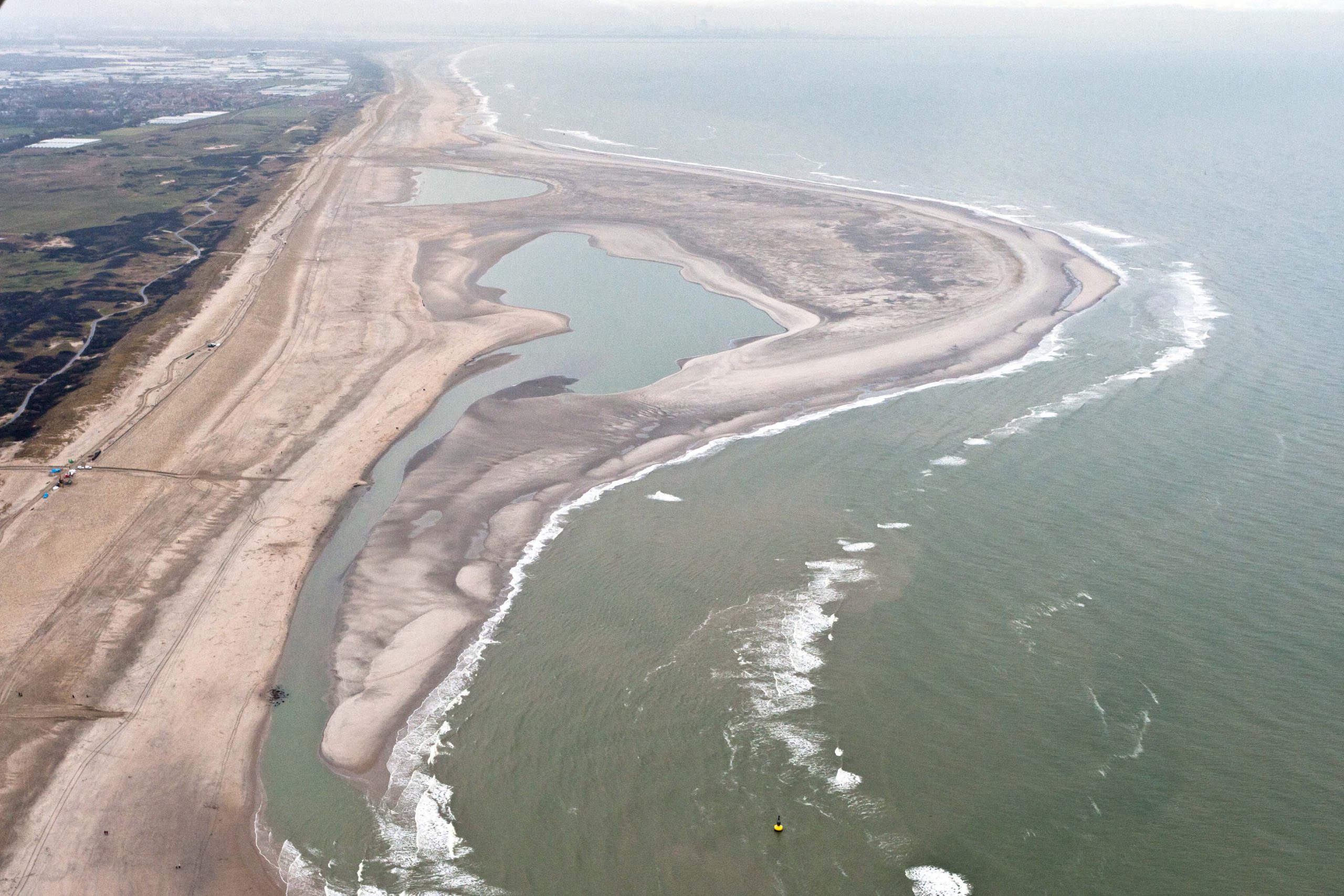Large sand nourishment’s along the coast can endanger swimmers, TU Delft researcher Dr Max Radermacher found during his PhD research. He developed a method to gauge the safety of hydraulically pumped sand beaches in advance and adapt the designs accordingly.
Created in 2011, the Sand Motor was built to feed sand to the adjacent coastline over the coming decades through natural sediment transport processes. (Photo: Joop van Houdt)
The current was too strong. There was no way that Max Radermacher would be able to swim back to shore. He drifted further and further towards the open sea. “I can image people panicking in this situation,” says the researcher in the Coastal Engineering Department. “I however, could simply grab hold of the little boat accompanying me.”
During the summer of 2014, Radermacher and a large group of colleagues from the Faculty of Civil Engineering and Geosciences set up camp behind the dunes of the Delfland coast in the Netherlands. Over six weeks they performed all kinds of tests on the Sand Engine, a 17.5 Mm3 pilot mega sand nourishment project along the Delfland coast.
Created in 2011, the Sand Engine was built to feed sand to the adjacent coastline over the coming decades through natural sediment transport processes. Sand nourishment systems are commonly used to mitigate coastal erosion problems. Larger nourishment volumes and longer return periods of nourishments are often suggested as a sustainable solution, and this was also the thinking behind the construction of the Sand Engine.
Currents, waves and the safety of swimmers
“My research analyses the effect of sand nourishment’s on currents, waves and the safety of swimmers,” says Radermacher, who defended his PhD thesis entitled Impact of sand nourishments on hydrodynamics and swimmer safety last week.
“I identified three potentially hazardous hydrodynamic phenomena at the Sand Engine. First, the nourishment acts as a perturbation to the longshore tidal flow of the Dutch North Sea coast, giving rise to contraction and possibly separation of the tidal flow. Offshore currents around the most seaward point of the nourishment caused by flow separation may be hazardous to swimmers and bathers. However, you have to swim quite far out from the beach – about a hundred metres or more – like I did to experience this strong current. Second, tidal currents at the entrance channel to the artificial Sand Motor lagoon may also induce strong tidal currents. And third, variable sandbars may develop, which can lead to rip currents.”
Although the tidal eddies clearly have an impact on the currents and sand movement around the Sand Engine, they have a limited impact on swimmers’ safety, says Radermacher. “One of the reasons is that hardly anybody swims in the sections of the Sand Engine where eddies could potentially cause dangerous currents because it’s such a long way from the beach entrances, the car parks and the restaurants.”
According to Radermacher, there is a definite risk of rip currents along this entire section of coast, including the parts that are popular with visitors. “But this phenomenon only occurs if the waves are high. On the North Sea coast, this only really happens in bad weather when very few people come out to the beach anyway.”
The biggest risk is the tidal currents in the artificial lagoon, which is part of the design of the Sand Engine. “The strength of the currents in the channel that connects the lagoon with the North Sea was particularly powerful in the first few years. This part of the Sand Engine attracts lots of beach-goers on sunny days. The risk has decreased in recent years, as natural processes have altered the shape of the access channel.”
The research enables engineers to gauge the safety of nourished sand beaches in advance and adapt the designs accordingly. Radermacher: “There are plans for the development of a sand engine along the east coast of England. Our work could help design these nourishment’s in such a way as to minimise risks for swimmers.”



Comments are closed.